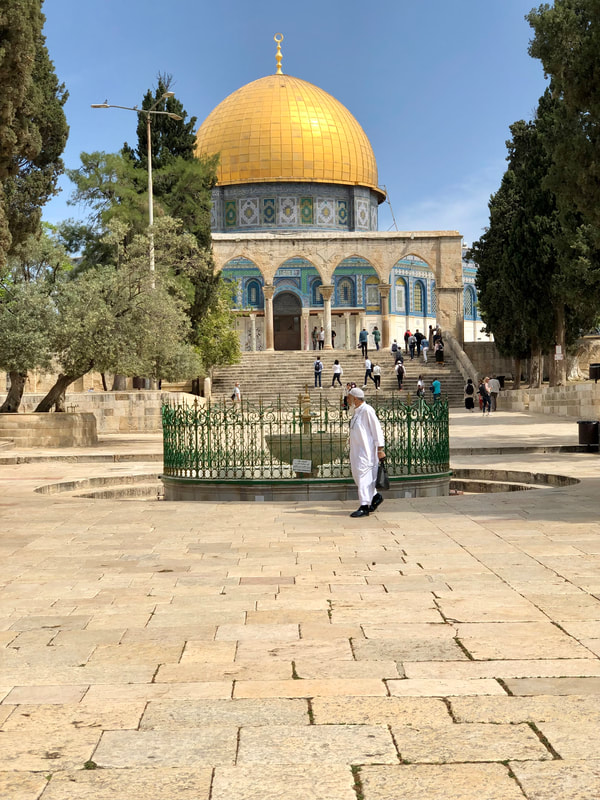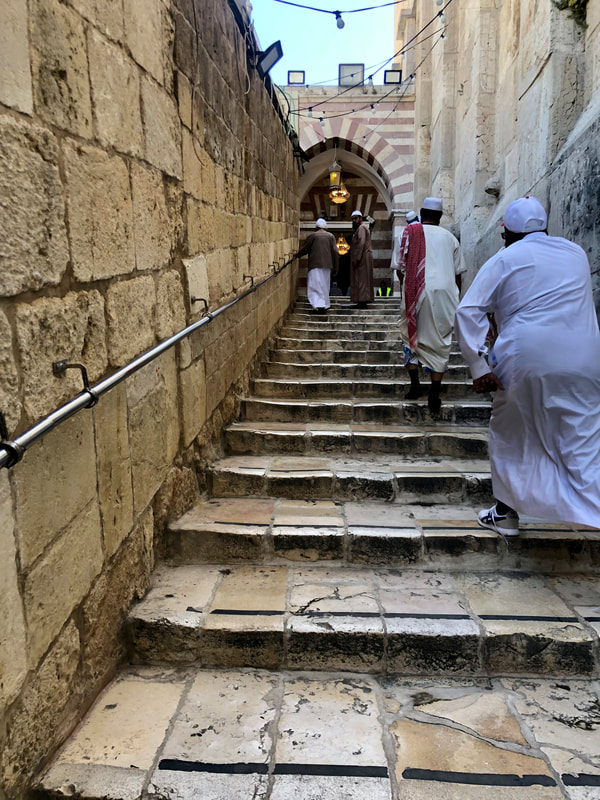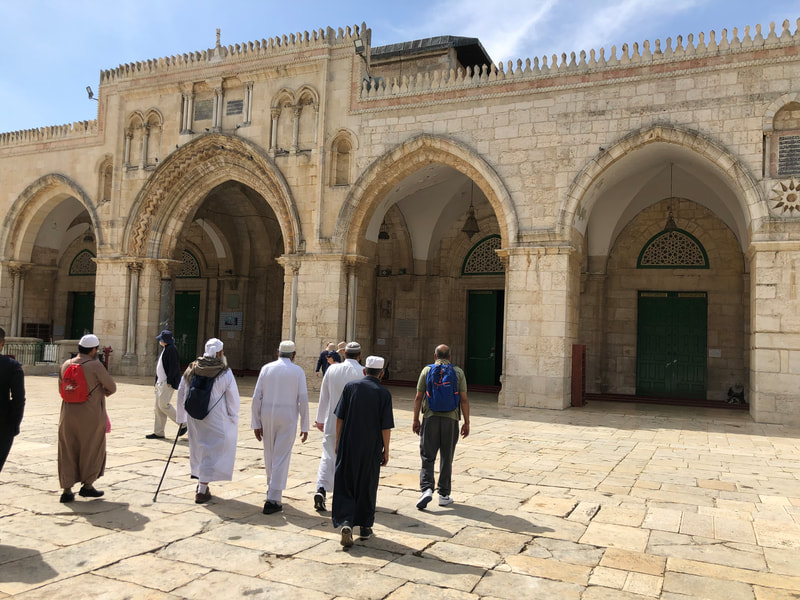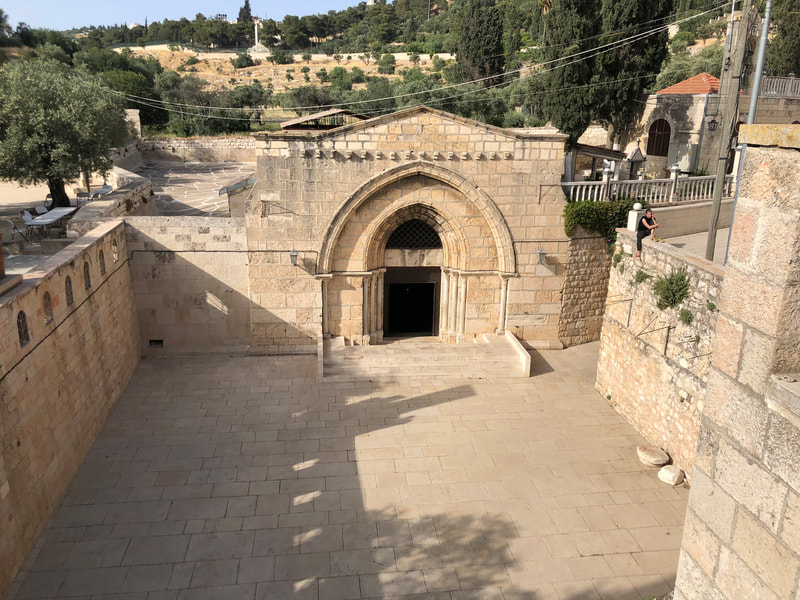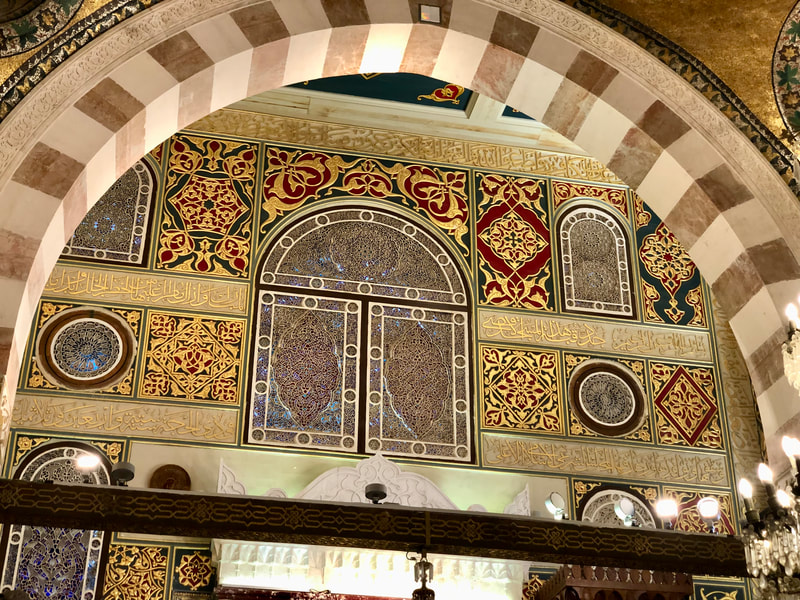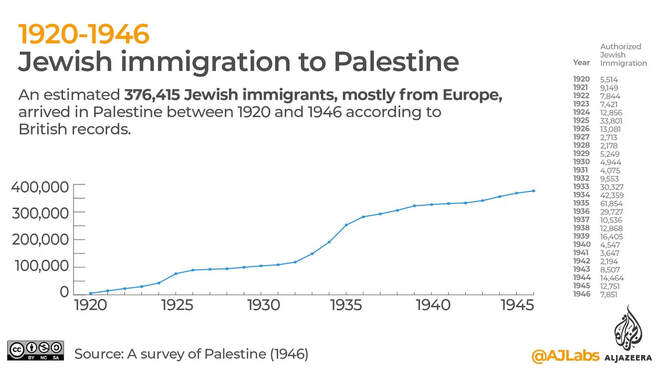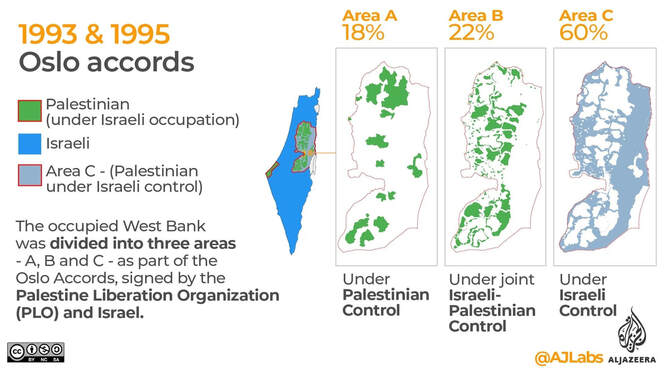Al-Aqsa | History of Palestine.
The Al-Aqsa Complex
The events of 7 October 2023 have prompted the documentation of some information on the history of Al-Aqsa (Islam's third holiest Mosque) and Palestine in the life of a Muslim. However the history of the conflict dates back to 1948.
This is an evolving conflict so this page will be work in progress, but the intention as always is to share information and content which will improve your understanding and open meaningful dialogue with knowledge and understanding, the 'other narrative' Insha-Allah (God willing).
There are many interesting and excellent articles and video clips on the subject. Some of which are shared below.
“It's Easier to Fool People Than It Is to Convince Them That They Have Been Fooled.” – Mark Twain
This is an evolving conflict so this page will be work in progress, but the intention as always is to share information and content which will improve your understanding and open meaningful dialogue with knowledge and understanding, the 'other narrative' Insha-Allah (God willing).
There are many interesting and excellent articles and video clips on the subject. Some of which are shared below.
“It's Easier to Fool People Than It Is to Convince Them That They Have Been Fooled.” – Mark Twain
Vanishing MAP of Palestine (*Click on this link to see the interactive map)
** Must watch the video link above to see the animated occupation and the disappearance of the land of the Palestinians.
Creating a Jewish state in Palestine was a deliberate, drawn-out and violent process. Palestinians were dispossessed of vast swathes of land. Over 80 percent of Palestinians in what became Israel in 1948 were made into refugees overnight.
The process may have culminated in 1948, but it had begun in the early 20th century – and it still continues today.
To create the State of Israel, Zionist forces attacked major Palestinian cities and destroyed some 530 villages. Approximately 13,000 Palestinians were killed in 1948, with more than 750,000 expelled from their homes and becoming refugees – the climax of the Zionist movement’s ethnic cleansing of Palestine.
Today, the refugees and their descendants number more than seven million. Many still languish in refugee camps in neighbouring Arab countries, waiting to return to their homeland.
Creating a Jewish state in Palestine was a deliberate, drawn-out and violent process. Palestinians were dispossessed of vast swathes of land. Over 80 percent of Palestinians in what became Israel in 1948 were made into refugees overnight.
The process may have culminated in 1948, but it had begun in the early 20th century – and it still continues today.
To create the State of Israel, Zionist forces attacked major Palestinian cities and destroyed some 530 villages. Approximately 13,000 Palestinians were killed in 1948, with more than 750,000 expelled from their homes and becoming refugees – the climax of the Zionist movement’s ethnic cleansing of Palestine.
Today, the refugees and their descendants number more than seven million. Many still languish in refugee camps in neighbouring Arab countries, waiting to return to their homeland.
The simplified analogy often used to describe the plight of the Palestinian people ... is that of a homeless family arriving at your home and as a compassionate person you offer them your caravan or shed to live in as a short term measure.
Before long as winter approaches they request to move into the warmth of the lounge of your home.
In a short while they begin to occupy the rooms and rest of your home and you are made to move into the lounge and then in a little while forcefully moved into the caravan in the back yard, whilst they occupy the home belonging to you and your family for generations.
Eventually you and your family in the caravan are forcefully relocated to the street outside your own property without any services or the right to return to your home...
Before long as winter approaches they request to move into the warmth of the lounge of your home.
In a short while they begin to occupy the rooms and rest of your home and you are made to move into the lounge and then in a little while forcefully moved into the caravan in the back yard, whilst they occupy the home belonging to you and your family for generations.
Eventually you and your family in the caravan are forcefully relocated to the street outside your own property without any services or the right to return to your home...
Israeli Palestinian conflict explained: an animated introduction to Israel and Palestine by the Jewish voice for peace.
In a nutshell ...the expulsion & occupation
How Britain Started the Arab-Israeli Conflict | Documentary History
Palestine 1920: The Other Side of the Palestinian Story | Al Jazeera World Documentary
Palestine and Israel: Mapping an annexation - AlJazeera
This is an excellent article with maps and infographics from 1917 to present day Palestine. Below is part of the article, for the full details click on th link above.
By Mohammed Haddad - Published on 26 Jun 2020.
The current map of Palestine is often described as resembling “Swiss cheese”. Over the past century it has been carved up, walled-in and filled with hundreds of illegal Israeli settlements and military checkpoints.
Now, in the latest round of Israel’s ongoing occupation and policy of land-grabs this map could become even more disjointed. On July 1, Israeli Prime Minister Benjamin Netanyahu is expected to announce Israel’s annexation of the Jordan Valley and northern Dead Sea.
Annexation is a term used when a state unilaterally incorporates another territory within its borders. Annexing the Jordan Valley would mean that Israel would officially consider it part of the state of Israel.
“International law is very clear: annexation and territorial conquest are forbidden by the Charter of the United Nations,” said Michael Lynk, the UN independent expert on human rights in the Palestinian territories.
To understand what annexation will look like on the ground and how we got here, Al Jazeera has compiled a collection of historic and present-day maps for you to explore.
The current map of Palestine is often described as resembling “Swiss cheese”. Over the past century it has been carved up, walled-in and filled with hundreds of illegal Israeli settlements and military checkpoints.
Now, in the latest round of Israel’s ongoing occupation and policy of land-grabs this map could become even more disjointed. On July 1, Israeli Prime Minister Benjamin Netanyahu is expected to announce Israel’s annexation of the Jordan Valley and northern Dead Sea.
Annexation is a term used when a state unilaterally incorporates another territory within its borders. Annexing the Jordan Valley would mean that Israel would officially consider it part of the state of Israel.
“International law is very clear: annexation and territorial conquest are forbidden by the Charter of the United Nations,” said Michael Lynk, the UN independent expert on human rights in the Palestinian territories.
To understand what annexation will look like on the ground and how we got here, Al Jazeera has compiled a collection of historic and present-day maps for you to explore.
1. 1917 – Pre-British Mandate Palestine
During World War I, Britain made several conflicting agreements to gain the support of various groups in the Middle East. Most notably was the Balfour Declaration – a public pledge promising the “establishment in Palestine of a national home for the Jewish people”.
On October 31, 1917, British forces conquered Palestine from the Ottoman-Turks, ending 1,400 years of Islamic rule over the region. In 1920, it began its 28-year rule over British Mandate Palestine.
Before the British Mandate in Palestine, Jews made up around six percent of the total population.
During World War I, Britain made several conflicting agreements to gain the support of various groups in the Middle East. Most notably was the Balfour Declaration – a public pledge promising the “establishment in Palestine of a national home for the Jewish people”.
On October 31, 1917, British forces conquered Palestine from the Ottoman-Turks, ending 1,400 years of Islamic rule over the region. In 1920, it began its 28-year rule over British Mandate Palestine.
Before the British Mandate in Palestine, Jews made up around six percent of the total population.
2. 1918-1947 – Jewish immigration from Europe
The British Mandate facilitated Jewish immigration from Europe to Palestine in the 1920s and 1930s.
The Jewish population in Palestine increased from 6 percent (1918) to 33 percent (1947).
The British Mandate facilitated Jewish immigration from Europe to Palestine in the 1920s and 1930s.
The Jewish population in Palestine increased from 6 percent (1918) to 33 percent (1947).
3. 1920-1946 – Jewish immigration to Palestine.
A total of 376,415 Jewish immigrants, mostly from Europe, arrived in Palestine between 1920 and 1946 according to British records.
At its peak in 1935, 61,854 Jews immigrated to Palestine.
A total of 376,415 Jewish immigrants, mostly from Europe, arrived in Palestine between 1920 and 1946 according to British records.
At its peak in 1935, 61,854 Jews immigrated to Palestine.
4. 1947 – Proposed UN Partition Plan.
Following the end of WWII, the newly formed United Nations proposed a plan that would grant 55 percent of historic Palestine to a Jewish state and 45 percent to a non-contiguous Arab one. Jerusalem would remain under international control.
Palestinians rejected the proposal because it stripped away much of the land that was under their control. At the time, they owned 94 percent of historic Palestine and comprised 67 percent of the population. This plan was never implemented on the ground.
Following the end of WWII, the newly formed United Nations proposed a plan that would grant 55 percent of historic Palestine to a Jewish state and 45 percent to a non-contiguous Arab one. Jerusalem would remain under international control.
Palestinians rejected the proposal because it stripped away much of the land that was under their control. At the time, they owned 94 percent of historic Palestine and comprised 67 percent of the population. This plan was never implemented on the ground.
5. 1948 – Palestinians expelled.
On May 14, 1948, the British Mandate expired triggering the first Arab-Israeli war. Zionist military forces expelled at least 750,000 Palestinians and captured 78 percent of historic Palestine.
The remaining 22 percent was divided into the West Bank and Gaza Strip.
The fighting continued until January 1949 when an armistice agreement between Israel and Egypt, Lebanon, Jordan and Syria was forged.
The 1949 Armistice Line is also known as the Green Line and is the generally recognised boundary between Israel and the West Bank.
The Green Line is also referred to as the (pre-) 1967 borders, before Israel occupied the remaining Palestinian territories during the June 1967 war.
On May 14, 1948, the British Mandate expired triggering the first Arab-Israeli war. Zionist military forces expelled at least 750,000 Palestinians and captured 78 percent of historic Palestine.
The remaining 22 percent was divided into the West Bank and Gaza Strip.
The fighting continued until January 1949 when an armistice agreement between Israel and Egypt, Lebanon, Jordan and Syria was forged.
The 1949 Armistice Line is also known as the Green Line and is the generally recognised boundary between Israel and the West Bank.
The Green Line is also referred to as the (pre-) 1967 borders, before Israel occupied the remaining Palestinian territories during the June 1967 war.
6. 1967 – Israel occupies Gaza and the West Bank
During the June 1967 War, Israel occupied all of historic Palestine and expelled a further 300,000 Palestinians from their homes.
Israel also captured the Syrian Golan Heights in the north and the Egyptian Sinai Peninsula in the south.
In 1978, Egypt and Israel signed a peace treaty which led to Israel withdrawing from the Egypian territory.
During the June 1967 War, Israel occupied all of historic Palestine and expelled a further 300,000 Palestinians from their homes.
Israel also captured the Syrian Golan Heights in the north and the Egyptian Sinai Peninsula in the south.
In 1978, Egypt and Israel signed a peace treaty which led to Israel withdrawing from the Egypian territory.
7. 1993 & 1995 Oslo Accords.
The Oslo Accords represented the first direct Palestinian-Israeli peace agreement. This led to the formation of the Palestinian Authority (PA) – an administrative body that would govern Palestinian internal security, administration and civilian affairs in areas of self-rule, for a five-year interim period.
On the ground, the occupied West Bank was divided into three areas – A, B and C.
Area A initially comprised three percent of the West Bank and grew to 18 percent by 1999. In Area A, the PA controls most affairs.
Area B represents about 22 percent of the West Bank. In both areas, while the PA is in charge of education, health and the economy, the Israelis have full control of external security, meaning they retain the right to enter at any time.
Area C represents 60 percent of the West Bank. Under the Oslo Accords, control of this area was supposed to be handed over to the PA. Instead, Israel retains total control over all matters, including security, planning and construction. The transfer of control to the PA has never happened.
The Oslo Accords represented the first direct Palestinian-Israeli peace agreement. This led to the formation of the Palestinian Authority (PA) – an administrative body that would govern Palestinian internal security, administration and civilian affairs in areas of self-rule, for a five-year interim period.
On the ground, the occupied West Bank was divided into three areas – A, B and C.
Area A initially comprised three percent of the West Bank and grew to 18 percent by 1999. In Area A, the PA controls most affairs.
Area B represents about 22 percent of the West Bank. In both areas, while the PA is in charge of education, health and the economy, the Israelis have full control of external security, meaning they retain the right to enter at any time.
Area C represents 60 percent of the West Bank. Under the Oslo Accords, control of this area was supposed to be handed over to the PA. Instead, Israel retains total control over all matters, including security, planning and construction. The transfer of control to the PA has never happened.
See the full article at https://www.aljazeera.com/news/2020/6/26/palestine-and-israel-mapping-an-annexation
|
|
|
|
|
|
|
|
|
|
|
|
|
|
|
|
|
|
|
|
|
|
|
|
|
|
|
|
|
|
|
|
|
|
|
|
|
|
|
|
|
|
|
|
|
|
|
|
|
|
|
|
|
|
|
|
|
|
|
|
|
|
|
|
|
|
|
Other FB live links
Saudi slaps Israel, US, UK, EU on Gaza stance
Matt Carthy - How come we never hear the words ‘PALESTINE has the right to defend itself’? We need ceasefires, and end to occupation, a lasting peace and ...
The Situation in Palestine #PalestinianLivesMatter #PalestineWillBeFree #GazaUnderAttack #FreePalestine #IsraeliCrimes #Palestine
Listen to the Palestinian activist Ansam Al-Masri talking about the ongoing Israeli attack on Gaza. #GazaUnderAttack
The Fake News about beheaded babies
Richard Boyd Barrett challenges Taoiseach on Irish Government's abysmal response to Israeli war crimes in Gaza
Watch one of the organisers speaking to the ABC about the protest held on Monday night, and calling out the Israeli ambassador to Australia, who labelled Palestinians "animals"
Double standards faced in Australia
Lauren Booth on Instagram - be resilient
Matt Carthy - How come we never hear the words ‘PALESTINE has the right to defend itself’? We need ceasefires, and end to occupation, a lasting peace and ...
The Situation in Palestine #PalestinianLivesMatter #PalestineWillBeFree #GazaUnderAttack #FreePalestine #IsraeliCrimes #Palestine
Listen to the Palestinian activist Ansam Al-Masri talking about the ongoing Israeli attack on Gaza. #GazaUnderAttack
The Fake News about beheaded babies
Richard Boyd Barrett challenges Taoiseach on Irish Government's abysmal response to Israeli war crimes in Gaza
Watch one of the organisers speaking to the ABC about the protest held on Monday night, and calling out the Israeli ambassador to Australia, who labelled Palestinians "animals"
Double standards faced in Australia
Lauren Booth on Instagram - be resilient





